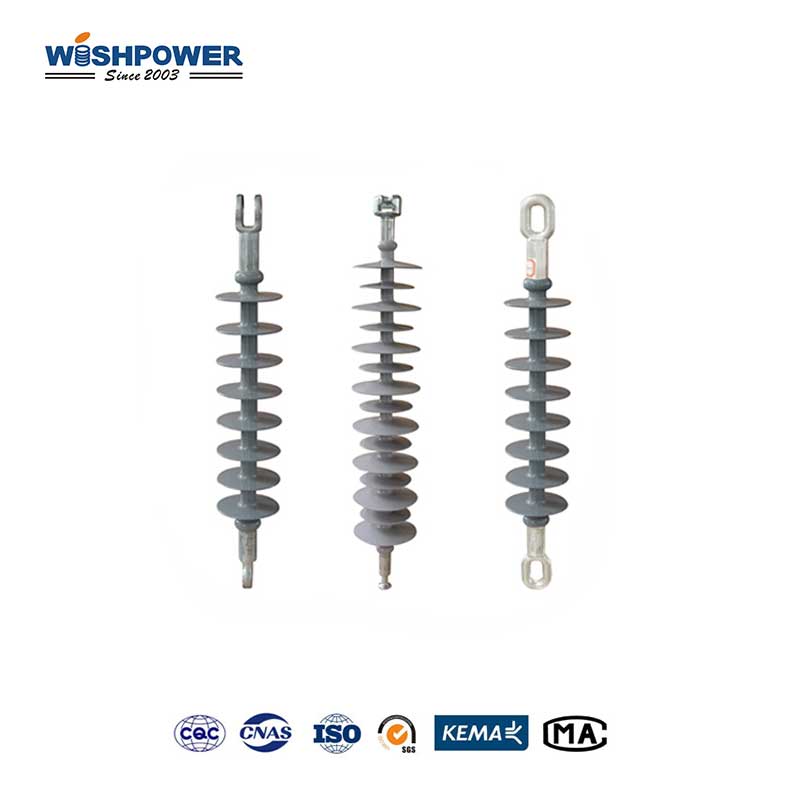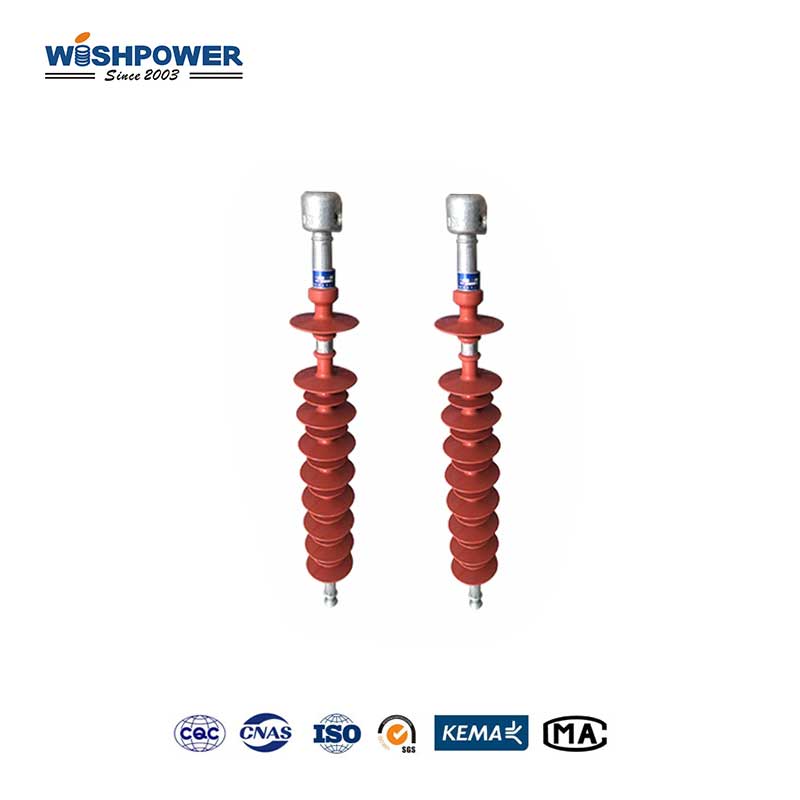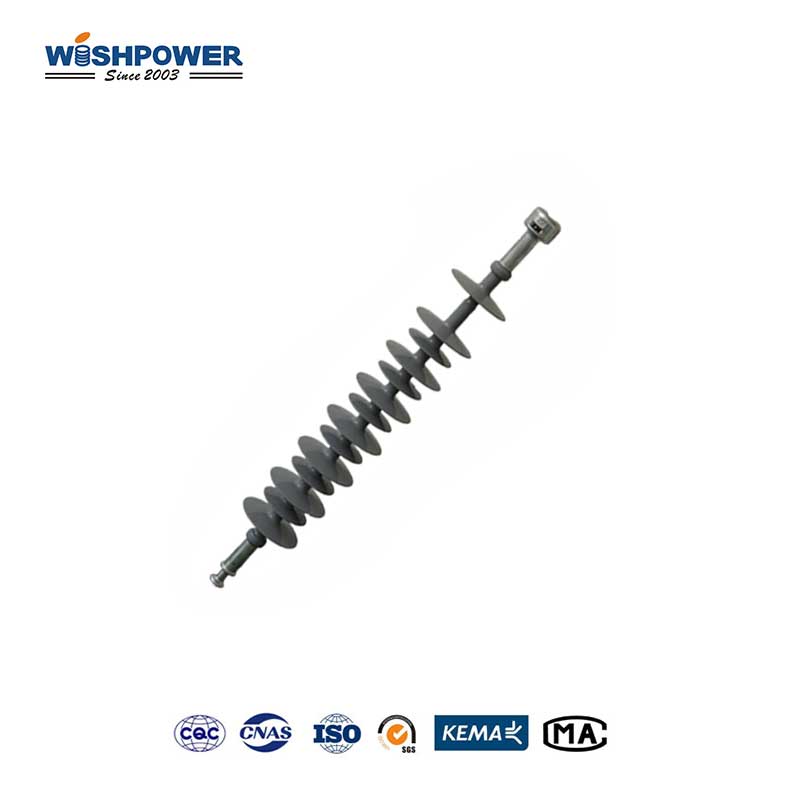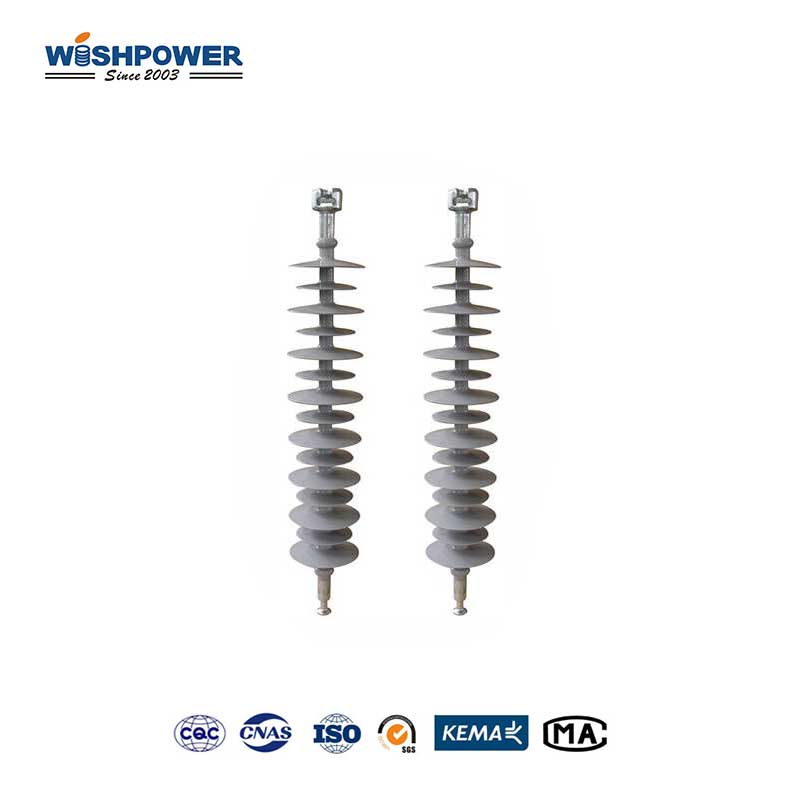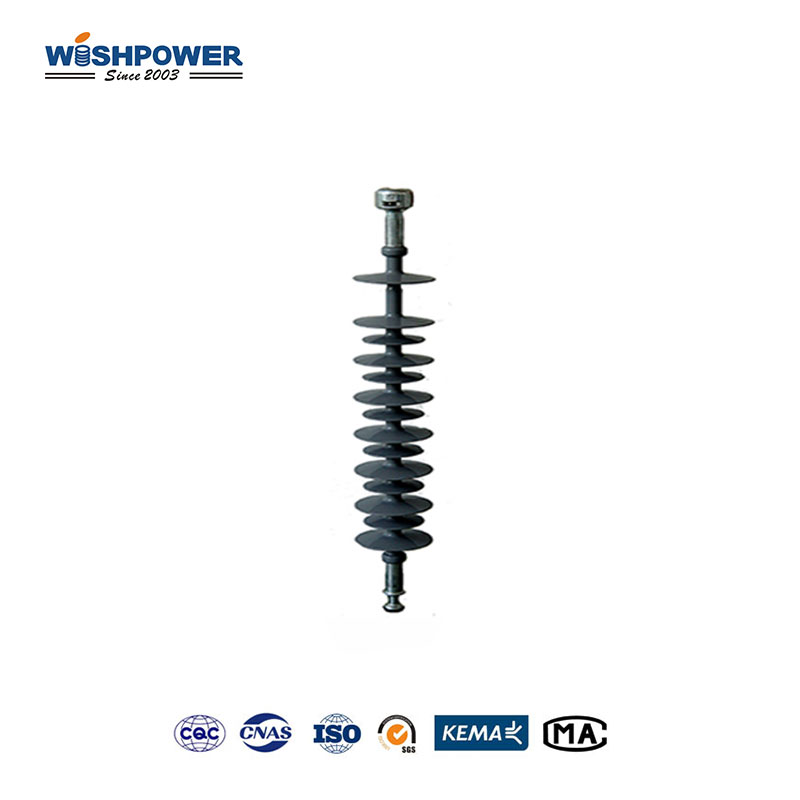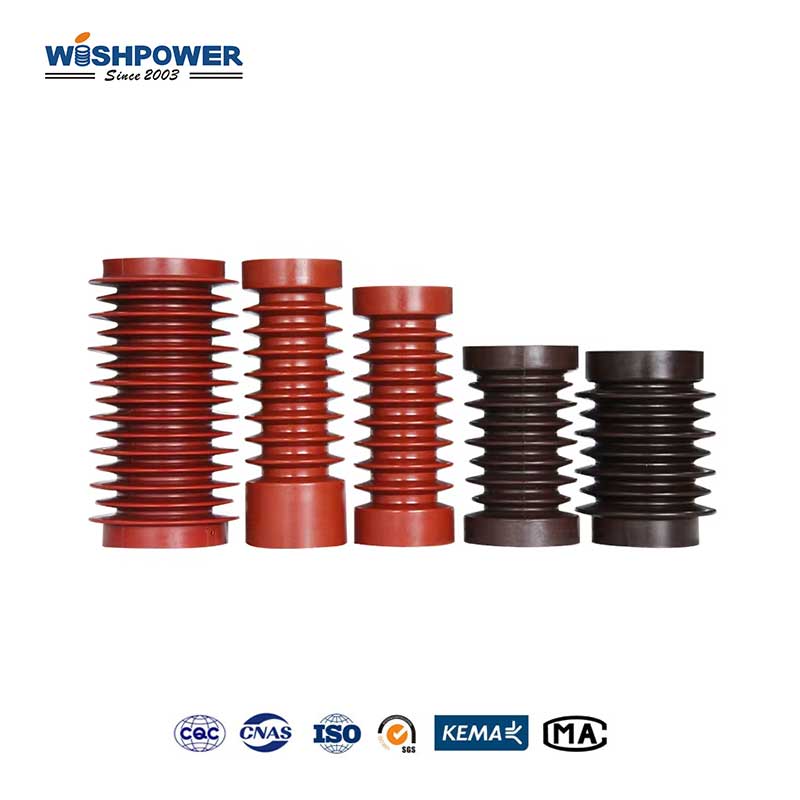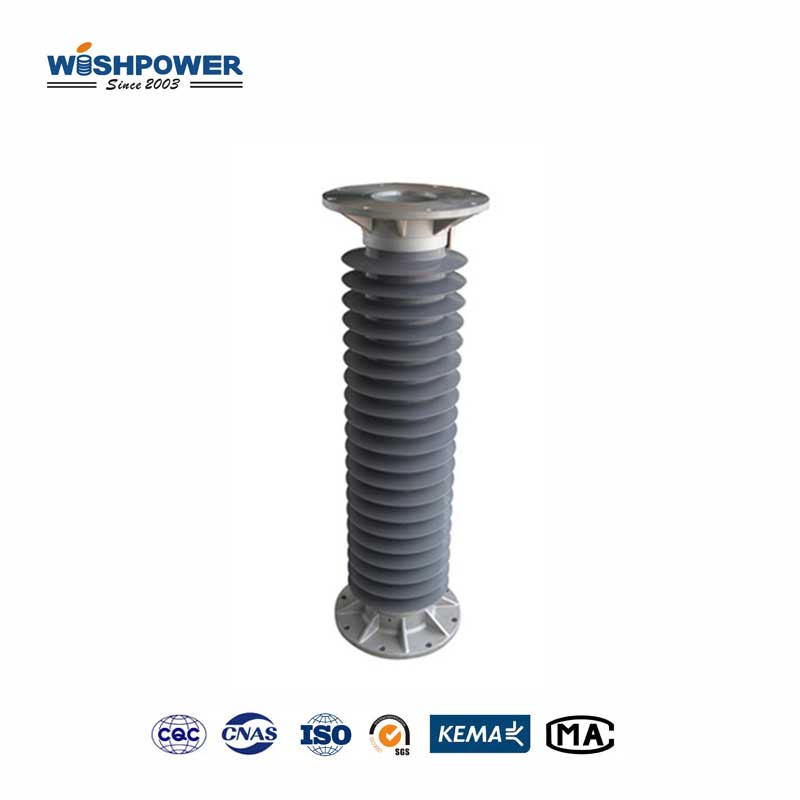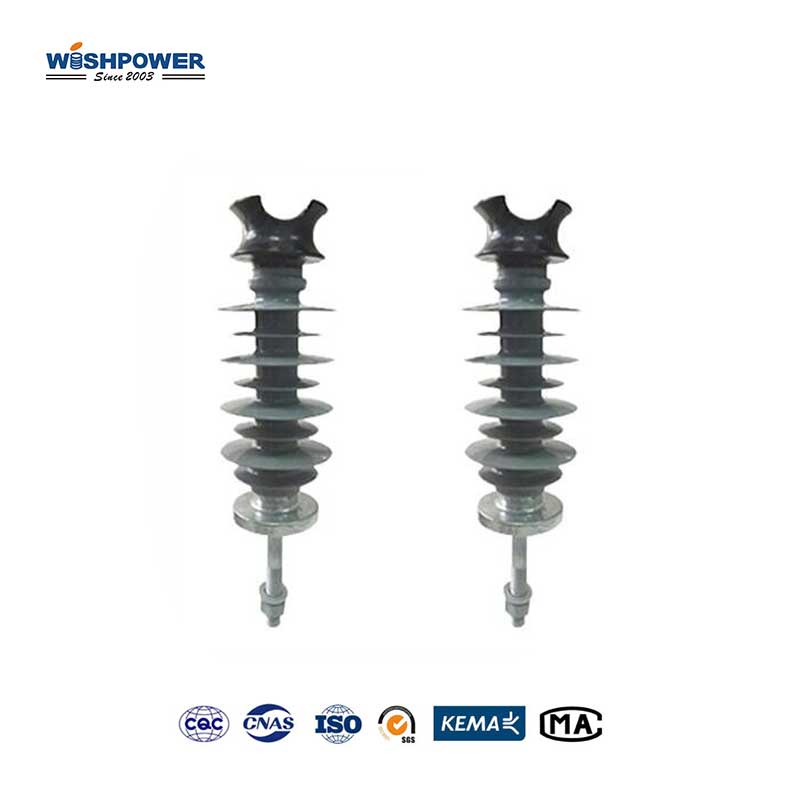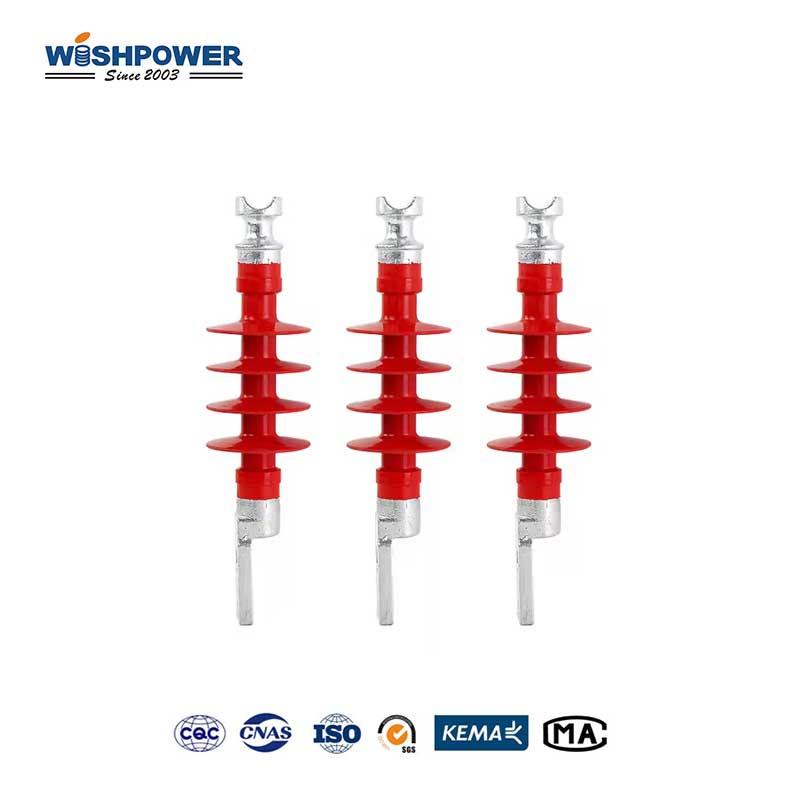Specification
| Product Type |
FQBG-25/8 |
FQBG-25/12 |
| Specified Voltage |
25 kV |
25 kV |
| Specified Mechanical Tensile Failing Load |
120 kN |
120 kN |
| Section Length |
584 mm |
600 mm |
| Min. Insulation Distance |
526 mm |
490 mm |
| Min. Nominal Creepage Distance |
1600 mm |
1600 mm |
| Lightning impulse Withstand Voltage(Peak Value) |
270 kV |
270 kV |
| Artificial Pollution Power Frequency Withstand Voltage(Salt Deposit Density) |
/ |
32 kV |
| Power Frequency Withstand Voltage Test-Wet |
150 kV |
120 kV |
The table above is just one of our product parameters. If you want more information, please get in touch with info@wishpower.net or download the file below.
What is the AF Wire Hanging Long Rod Insulator?
AF Wire Hanging Long Rod Insulator is a subtype of high voltage insulator that is utilized in overhead electricity transmission and distribution to carry the conductors. It has the construction of an elongated rod manufactured using insulating material; the most common being porcelain or composite polymer and due to its construction, it hangs on a tower or cross-arm while at the same time supporting the wire or conductor. They protect the working personnel in the region and also make insulation between the live wire and the grounded tower, thus controlling electrical faults that hinder the stability of the power transmission process. It can support mechanical stress in cases of wind, breaking of ice, or any of the climatic factors. It is especially useful in areas characterized by increased levels of pollution because its design prevents arcing and contributes to the device’s proper functioning throughout its service life. Generally, these insulators can be used in various voltage levels; EHV and UHV transmission lines; this promotes the safety and reliability of the electric network.
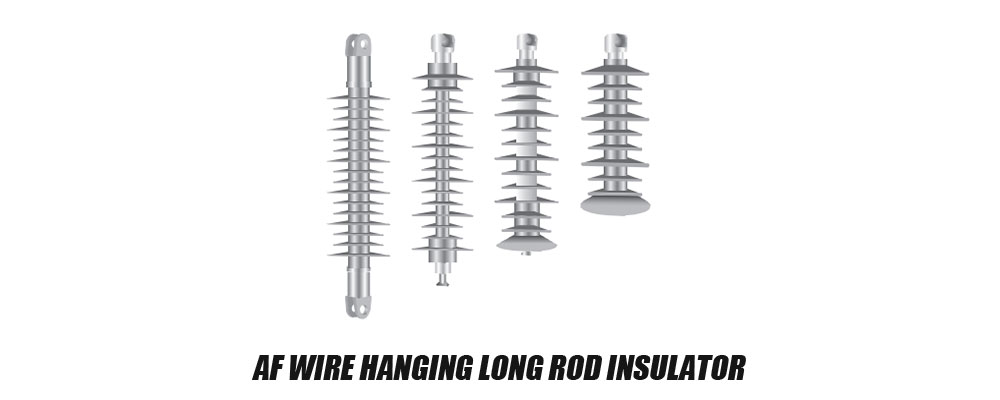
Unique Features
- Compact and Streamlined Design:
Its rod-like shape is flexible but contains few joints and this makes the tower sturdy and also makes maintenance easy.
- Enhanced Mechanical Strength:
A long rod structure means that the transmission rail exhibits higher mechanical strength as compared to other shapes of the rail; thus it is less prone to bending and breaking when load is applied or subjected to weather conditions such as freezing and so on.
- Pollution Performance:
The surface of the Long Rod insulator is smoother than that of the ceramic insulator, and it is therefore less likely to attract contaminants; its ability to withstand polluted conditions is therefore higher and chances of getting contoured by high voltage flashovers are slim.
- Ease of Installation:
Hanging design can be quickly and easily positioned to different kinds of tower constructions thus achieving the right number of conductor alignment and tension without much difficulty.
- Improved Vibration Resistance:
This form assists in avoiding vibration from wind and mechanical oscillations that cause fatigue and shorten the period that the insulator will last.
Benefits
- Reduced Flashover Risk:
Its design also acts to shy away from building up deposits of contaminants and thus reduces greatly the instances of electrical flashovers in regions that are polluted.
- High Durability:
Due to its rigidity, it is highly resistant to strong wind and mechanical forces, causing it to have a longer duration than others.
- Lower Maintenance Costs:
This helps to cut down the maintenance costs and reduce time spent on cleaning and inspection activities.
- Enhanced Electrical Performance:
The material stays highly resistant to electricity and keeps the received properties under different circumstances to transmit electrical power.
- Simplified Installation:
Its design also favors its installation, hence it can easily be installed in the field compared to the other systems.
- Improved Aesthetic Integration:
The streamlined and compact design is visually less obtrusive, and the composite long rod insulator can be beneficial in areas where the visual impact of power lines is a concern.
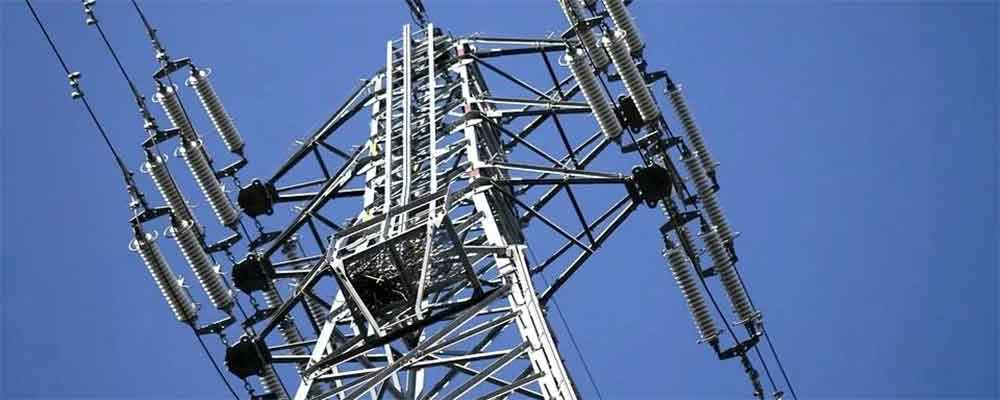
Application
- Power Transmission:
Most commonly utilized in high voltage UHV transmission purposes for conductor supporting and conductor insulating for long-distance energy transmission.
- Power Distribution:
Used in medium or high voltage networks of power distribution to ensure insulating and supporting function of conductors; to strengthen the power distribution structure.
- Railways:
Used electrified railway system to guard overhead catenary wires to ensure the stability of electricity supply to the trains and also for the protection of railway operations.
- Renewable Energy:
Used in wind and solar power stations to regulate high voltage connections and thus enhance the flow of clean energy to the grid.
- Industrial Facilities:
This long rod polymer insulator is common in different industrial facilities that call for HV electricity supply like the manufacturing industries and the oil refineries among others.
About Wishpower
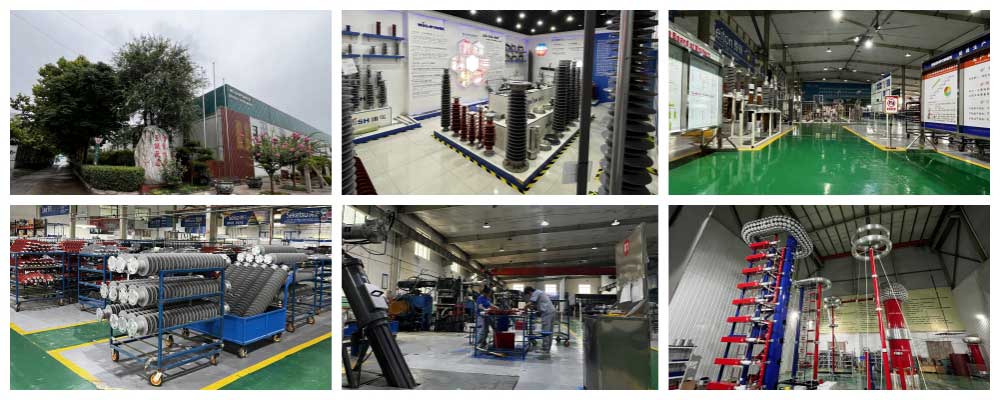
Certificate
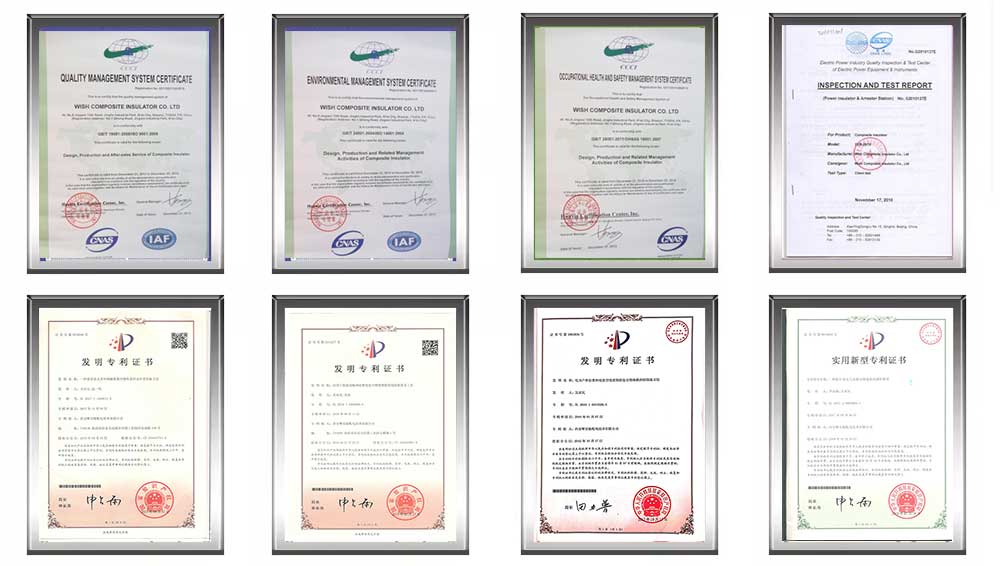
Hot Tags: AF Wire Hanging Long Rod Insulator, Composite Insulator, China, manufacturers, ISO factory, wholesale, KEMA, high quantity, best, price, low to high voltage














